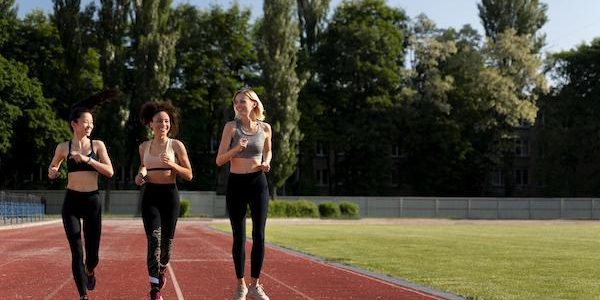
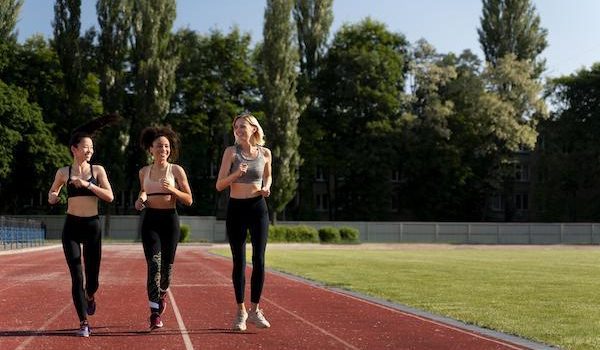
With No U.S Olympic Race Walkers, Will The Event Grow?
BlogRunningSportStars of the WeekStaffPicksXC-Track-Running August 2, 2024 Lauren Keating 0

When non-runners think of track and field as an Olympic sport, they mostly image athletes like Usain Bolt or Sha’Carri Richardson sprinting to the finish on a track straightway with leg muscles bulging, seemingly flying through the air. Would it be accurate to say that they probably never even heard of race walking?
The 2022 Paris Olympic Games are in full swing, but for track and field fans we waited patiently for the start of events in the sport which kicked off on Thursday, August 1. The first one up at bat? The Men’s 20km Race Walk.
In an exciting 12.427. miles—if you are or were a race walker—the most elite athletes across the globe walked their hearts out in the pursuit of Olympic glory in this event. It might have been their legs that were forced to keep that meticulous form (or be thrown a card in warning), but it was heart that would take the top athletes to the finish to complete lap after lap on the streets near the Eiffel Tower. How could they not be inspired?
Maybe because by the end of the race they were dripping in sweat under the boiling summer sun, their bodies pushed to the point of exhaustion and dare we say pain as they raced against the clock mile after mile to get on the podium—all while making sure they remained walking.
But for spectators, it was inspiring to watch the steady rhythm of toros swaying past the iconic landmark during an iconic sporting event.
There was only one thing missing—an American athlete.
The Race Walk: Rules, Red Cards, And The Olympic Winner
At first glance, it may look to an untrained race walking eye that this track and field event is some form of running. Maybe a jog at best? But the race walk is an endurance-based event that is all about discipline and rules. Any sign of the athlete breaking out in a “jog” or “run” can result in a disqualification.
The race walk is different from other running events. Competitors must have one foot that is in contact with the ground at all times. So you know that image you have of a runner sprinting but really flying in the air? That at its core separates a runner from a race walker.
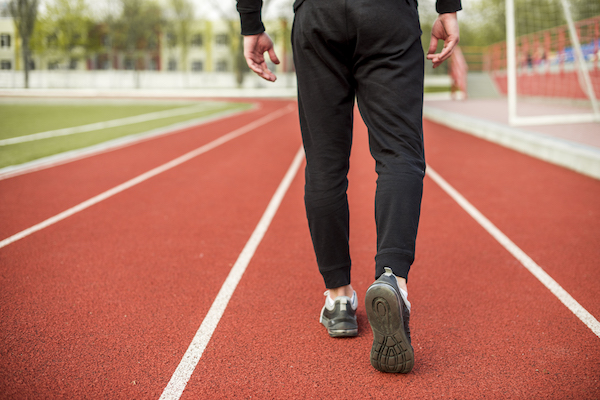
Form And Red Cards
Stickler for form, the event also requires that the leading leg remains straight from the point of contact from the ground. So when runners are all about driving knees up and legs back behind them, race walkers must keep that advancing leg straight as a board as the body passes over it.
There are judges who constantly look at form throughout the race, making sure the legs are doing what they are supposed to.
If a judge witnesses improper form, a warning card is given. Race walkers are given yellow cards as a warning, and an example would be for bending the knee. If three different judges give a yellow card to an athlete they then get a red card. In some meets, this means disqualification. In the Olympics, it means a three-minute penalty. Each additional penalty adds a minute until reaching an additional seven minutes which the athlete is then disqualified. Ending up in the penalty box means there is a very hard chance to make it to the podium.
Olympic Glory
It was expected that Brazil’s Caio Bonfim would take an early lead and he did. The men played it safe in the first few laps, France getting a yellow card early on. About 3km in, Sweden’s Perseus Karlstrom took the lead.
Then,Canada’s Evan Dunfee attempted to make a move early on, still towards the front of the pack about 18 minutes into the race. There were comments that he is the closest we have to a U.S. race walker competing, but close isn’t representation. (Where are the U.S. race walkers?!)
So early into the race, there remained a pack of athletes. It was a relatively slow race at this point, it being anyone’s gold for the taking.
By the sixth lap, movement was made. Some athletes dropped to the back, others walked on to remain in that leading pack.
Akshdeep Singh was slapped with enough warning to earn him some time in the penalty box.
At the 14km mark, it was Ecuudor’s Brain Daniel Pintado who took the lead after breaking away from the pack. The heat began to beat down, causing some athletes to struggle. By the home stretch of the 20km Race Walk, Pintado continued to surge knowing he just had to pass the Eiffel Tower one more time. Watching his athleticism and determination and then the awe and pride was nothing short of inspiring—especially if you ever competed in the event.
There was no one behind him, as he crossed the finish line at 1:18:55 to win the gold.
This was Pintado’s third Olympic Games, previously holding a silver medal in the event. Caoi Bonfilm from Brazil finished in second place with 1:19:09, and Alvaro Martin from Spain crossed that finish line right after 1:19:11 to win bronze.
In the Women’s. 20km Race Walk, gold went to Jiayu Yang from China, silver to Maria Perez from Spain, and bronze to Jemina Montag from Australia.
Why No Americans In The Race Walk?
The Paris Games was the first time there were no American race walk athletes to compete in the Olympic event since it was introduced to the Games in 1904. Yes, the event has been around that long and yes, we typically have athletes in the elite ranking.
At the 2024 USATF Olympic Trials in Eugene, Oregon there were 20km Race Walk events for both men and women. (But they were held in Springfield, further proving the race walk is still the middle sister of track and field events.)
Michelle Rohl, the third-place finisher was an Olympian, competing in the 1992 and 1996 Olympics. However, at age 58, competing in another Olympic circuit wasn’t in the cards.
It wasn’t in the cards for Nick Christie, first place winner at the Trials in the Men’s 20km race (1:24.46), or Emmanuel Corvera, or Jordan Crawford, the second and third place finishers. The same is true for Women’s 20km Race Walk Trial winner Robyn Stevens (1:37.38), second place Miranda Melville, or third place Michelle Rohl.
None of these race walkers finished in the Olympic standard of 1:20:10 for men and 1:29:20 for women.
It doesn’t mean that our best race walkers aren’t “good enough.” Power walking so fast it’s almost looks like jog while keeping form is extremely hard to do for over 12 miles. Most can’t even do that more than a few blocks.
Instead, it reflects on how little emphasis or seriousness the events are oftentimes given. Youth athletes want to be sprinters or long-distance runners. But how many are introduced to the race walk? This falls on coaches to increase exposure. Athletes may find they are fast runners and also great race walkers. Take a look at the Durrant twins. They are prime examples of talent in both the race walk and events like the 1500m.
Youth Race Walkers May Help Us For 2028 Olympics
All-American race walker Heather Durrant finished the 10k race walk at the USATF U20 Outdoor Track and Field Championships in 2022. She finished in third place making history as one of the three U20 female athletes to finish the 10k race walk event in under 50 minutes. She finished in 49:55.88. A month later she broke the 3K race walking event at the 2022 USATF National Junior Olympic Track and Field Championships in 13:49.08.
The Durrant twin then competed a month later in the 17-18-year-old Women’s 3000m Race Walk event, at the 2022 AAU Junior Olympic Games and broke the record there with her time of 14:03.32.
She is also the Pan American U20 Championship silver medalist in the 10,000m Race Walk with her finish time of 50:02.61 from August 2023. In the same event this spring, she finished in first place with 48:30.8 at the US Race Walk Team Trials in California.
Her twin Hannah is also a race walker, finishing the mile race walk in February 2023 at the Armory Track and Field Center in New York in 8:07.55 to land 11th place. She had a solid 2022 season in the event, including placing third at the USATF National Junior Olympics in the 3000m race walk with a time of 15:05.25.
If more athletes like the Durrant twins dip a toe in the event, the U.S. may be able to mold some elite athletes.
The (sort of) good news? We were close to having the U.S. represented in the race walk mixed relay event.
Paris is the first time the Olympics will include the race walk mixed relay. Taking place on August 7, the event features a male and female athlete who each take two legs of distance.
Christie and Melville were a hopeful team. The two together as a team have a ranking of being number 30 in the world.
However, the problem is that only 25 teams compete in the Olympic event and 30 teams were eyeing for a spot. It would have been a slight chance they would make it to compete in Paris.
This hopefully makes people wonder why there are no Americans in any of the race walking events. It could shine a light that the event is a worthy one and that efforts are made to put it on the map.
Junior national championships are filled with the next generation of race walkers, a sign that the event still has a heart beat. It’s hard to know if the race walk will gain in popularity or even in respect, but the conversation about it is a start. Athletes know there is always room to grow. The same is true for the race walk.
The American elite race walkers should be commended on how much work they have put in and while it wasn’t it at the Olympics, this does not diminish the various other championship titles and big wins they had leading up to the summer Games.
With the 2028 Olympics held in Los Angeles on US soil, let’s hope that Americans are represented in all track and field events. That means race walking has four years to set new goals and dream big.

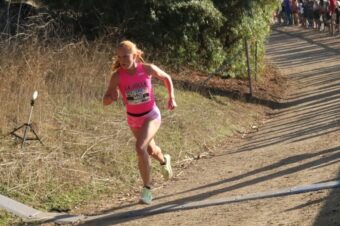
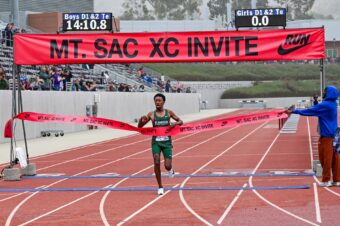




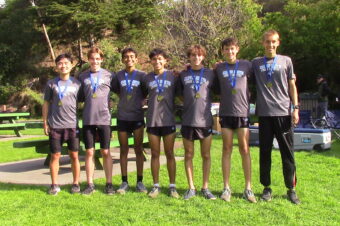
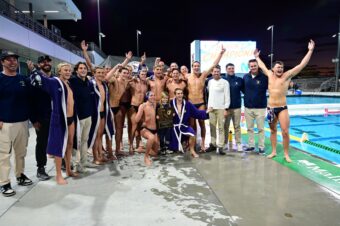
No comments so far.
Be first to leave comment below.